Description
All resources are in electronic format and can be downloaded from your account or email – How to Download. Payments will be processed instantly after checkout. Please note that all sales are final and non refundable. If you still have questions, find answers on our FAQ page or just send us an email at inquiry@testbankcorp.com, we will respond as soon as possible.
Fundamentals of Anatomy & Physiology, 10e, GE (Martini)
Chapter 1 An Introduction to Anatomy and Physiology
Multiple Choice Questions: Section One
1) ________ is considered the oldest medical science.
A) Anatomy
B) Biology
C) Physiology
D) Cytology
E) Embryology
Answer: A
Learning Outcome: 1-1
Bloom’s Taxonomy: Knowledge
2) Anatomy is to ________ as physiology is to ________.
A) function; form
B) form; structure
C) structure; function
D) structure; form
E) growth; form
Answer: C
Learning Outcome: 1-2
Bloom’s Taxonomy: Comprehension
3) The analysis of the internal structure of individual cells is called
A) cytology.
B) histology.
C) embryology.
D) physiology.
E) anatomy.
Answer: A
Learning Outcome: 1-3
Bloom’s Taxonomy: Knowledge
4) The study of the general form and superficial markings of an organism is called ________ anatomy.
A) gross
B) surface
C) systemic
D) regional
E) surgical
Answer: B
Learning Outcome: 1-3
Bloom’s Taxonomy: Knowledge
5) The study of the superficial and internal features in a specific area of the body is called ________ anatomy.
A) surface
B) regional
C) surgical
D) pathological
E) radiographic
Answer: B
Learning Outcome: 1-3
Bloom’s Taxonomy: Knowledge
6) Anatomical features that change during illness are studied in ________ anatomy.
A) gross
B) surface
C) microscopic
D) pathological
E) regional
Answer: D
Learning Outcome: 1-3
Bloom’s Taxonomy: Knowledge
7) The study of the first two months of development is termed
A) histology.
B) embryology.
C) cytology.
D) pathology.
E) organology.
Answer: B
Learning Outcome: 1-3
Bloom’s Taxonomy: Knowledge
8) The study of the function of specific organ systems is called
A) systemic physiology.
B) organ physiology.
C) cell physiology.
D) pathological physiology.
E) histology.
Answer: A
Learning Outcome: 1-3
Bloom’s Taxonomy: Knowledge
9) Cardiovascular function is an example of
A) histophysiology.
B) organ physiology.
C) systemic physiology.
D) pathological physiology.
E) physiological chemistry.
Answer: C
Learning Outcome: 1-3
Bloom’s Taxonomy: Knowledge
10) The study of the liver is to gross anatomy as the study of a liver cell is to
A) physiology.
B) regional anatomy.
C) cytology.
D) systemic anatomy.
E) radiographic anatomy.
Answer: C
Learning Outcome: 1-3
Bloom’s Taxonomy: Comprehension
11) Organ physiology is to ________ as gross anatomy is to ________.
A) cell physiology; microscopic anatomy
B) macroscopic anatomy; unbalance
C) equilibrium; macroscopic anatomy
D) balance; equilibrium
E) imbalance; microscopic anatomy
Answer: A
Learning Outcome: 1-3
Bloom’s Taxonomy: Comprehension
12) Which of the following is arranged in correct order from the most complex to the simplest?
A) cellular, tissue, molecular, system, organ, organism
B) molecular, cellular, tissue, organ, system, organism
C) tissue, cellular, molecular, organ, system, organism
D) organ, organism, molecular, cellular, tissue, system
E) organism, system, organ, tissue, cellular, molecular
Answer: E
Learning Outcome: 1-4
Bloom’s Taxonomy: Comprehension
13) Which organ system provides support, protection of soft tissue, mineral storage, and blood formation?
A) integumentary
B) muscular
C) skeletal
D) nervous
E) endocrine
Answer: C
Learning Outcome: 1-4
Bloom’s Taxonomy: Knowledge
14) Which organ system transports nutrients, metabolic wastes, gases, and defense cells?
A) cardiovascular
B) digestive
C) muscular
D) respiratory
E) urinary
Answer: A
Learning Outcome: 1-4
Bloom’s Taxonomy: Knowledge
15) Which organ system includes the spleen and the tonsils?
A) digestive
B) endocrine
C) nervous
D) cardiovascular
E) lymphatic
Answer: E
Learning Outcome: 1-4
Bloom’s Taxonomy: Knowledge
16) The kidneys and ureters are organs of the ________ system.
A) endocrine
B) digestive
C) respiratory
D) urinary
E) lymphatic
Answer: D
Learning Outcome: 1-4
Bloom’s Taxonomy: Knowledge
17) The pituitary gland and thyroid gland are organs of the ________ system.
A) endocrine
B) cardiovascular
C) respiratory
D) lymphatic
E) digestive
Answer: A
Learning Outcome: 1-4
Bloom’s Taxonomy: Knowledge
18) Which organ system removes carbon dioxide from the bloodstream?
A) cardiovascular
B) lymphatic
C) respiratory
D) digestive
E) endocrine
Answer: C
Learning Outcome: 1-4
Bloom’s Taxonomy: Knowledge
19) Lungs are to the respiratory system as the liver is to the ________ system.
A) lymphatic
B) urinary
C) digestive
D) cardiovascular
E) nervous
Answer: C
Learning Outcome: 1-4
Bloom’s Taxonomy: Knowledge
20) Skin, hair, and nails are associated with the ________ system.
A) skeletal
B) muscular
C) integumentary
D) endocrine
E) immune
Answer: C
Learning Outcome: 1-4
Bloom’s Taxonomy: Knowledge
21) A chemical imbalance in the body can cause the heart to stop pumping blood, which in turn will cause other tissues and organs to cease functioning. This observation supports the view that
A) all organisms are composed of cells.
B) all levels of organization within an organism are interdependent.
C) chemical molecules make up cells.
D) blood has magical properties.
E) congenital defects can be life-threatening.
Answer: B
Learning Outcome: 1-4
Bloom’s Taxonomy: Application
22) In general, the nervous system does each of the following except
A) help to maintain homeostasis.
B) respond rapidly to change.
C) direct long-term responses to change.
D) direct very specific responses.
E) interpret sensory information.
Answer: C
Learning Outcome: 1-5
Bloom’s Taxonomy: Comprehension
23) Which one of the following is not a characteristic of the endocrine system?
A) releases chemical messengers called hormones
B) produces a more rapid response than the nervous system
C) produces effects that last for days or longer
D) produces an effect that involves several organs or tissues at the same time
E) important homeostatic system
Answer: B
Learning Outcome: 1-5
Bloom’s Taxonomy: Comprehension
24) The central principle of physiology is
A) nutrition.
B) reflexes.
C) homeostasis.
D) stimulation.
E) temperature regulation.
Answer: C
Learning Outcome: 1-5
Bloom’s Taxonomy: Comprehension
25) The maintenance of a relatively constant internal environment in an organism is termed
A) positive feedback.
B) homeostasis.
C) negative feedback.
D) effector control.
E) integration.
Answer: B
Learning Outcome: 1-5
Bloom’s Taxonomy: Knowledge
26) When body temperature rises, a center in the brain initiates physiological changes to decrease the body temperature. This is an example of
A) negative feedback.
B) positive feedback.
C) nonhomeostatic regulation.
D) diagnostic regulation.
E) fever.
Answer: A
Learning Outcome: 1-6
Bloom’s Taxonomy: Comprehension
27) A cell or an organ that responds to commands of the control center in negative feedback is termed a(n)
A) receptor.
B) thermoregulator.
C) hypothalamus.
D) effector.
E) stimulus.
Answer: D
Learning Outcome: 1-6
Bloom’s Taxonomy: Knowledge
28) This type of feedback exaggerates the effects of variations from normal.
A) negative
B) positive
C) neutral
D) depressing
E) All of the answers are correct.
Answer: B
Learning Outcome: 1-6
Bloom’s Taxonomy: Knowledge
29) If a response decreases a disturbance, the control system is classified as a ________ feedback system.
A) deficit
B) negative
C) neutral
D) polarized
E) positive
Answer: B
Learning Outcome: 1-6
Bloom’s Taxonomy: Comprehension
30) If a response increases a disturbance, the control system is classified as a ________ feedback system.
A) deficit
B) negative
C) neutral
D) polarized
E) positive
Answer: E
Learning Outcome: 1-6
Bloom’s Taxonomy: Comprehension
31) An example of a receptor in a negative feedback loop controlling body temperature would be
A) temperature sensors on the skin that detect a stimulus.
B) sweat glands that increase secretion.
C) regulatory centers that send commands to an effector.
D) effectors that cause blood vessels to dilate.
E) sweat glands that act like effectors.
Answer: A
Learning Outcome: 1-6
Bloom’s Taxonomy: Comprehension
32) The integrating center for the negative feedback loop that regulates body temperature is the
A) hypothalamus.
B) skin.
C) temperature sensor.
D) positive feedback center.
E) thermostat.
Answer: A
Learning Outcome: 1-6
Bloom’s Taxonomy: Comprehension
33) The quadrants of the abdominopelvic region include all of the following except
A) right upper quadrant (RUQ).
B) right lower quadrant (RLQ).
C) left upper quadrant (LUQ).
D) left lower quadrant (LLQ).
E) pelvic quadrant.
Answer: E
Learning Outcome: 1-7
Bloom’s Taxonomy: Knowledge
34) Which of the following is not considered an abdominopelvic region?
A) right hypochondriac
B) right inguinal region
C) left lumbar
D) left hypochondriac
E) upper
Answer: E
Learning Outcome: 1-7
Bloom’s Taxonomy: Knowledge
35) A person who is standing facing forward with hands at the sides and palms facing forward is in the ________ position.
A) supine
B) prone
C) anatomical
D) frontal
E) sagittal
Answer: C
Learning Outcome: 1-7
Bloom’s Taxonomy: Knowledge
36) An anatomical term that means the same as ventral is
A) posterior.
B) inferior.
C) abdominal.
D) anterior.
E) superior.
Answer: D
Learning Outcome: 1-7
Bloom’s Taxonomy: Knowledge
37) The heart is ________ to the lungs.
A) lateral
B) medial
C) posterior
D) proximal
E) distal
Answer: B
Learning Outcome: 1-7
Bloom’s Taxonomy: Knowledge
38) The wrist is ________ to the elbow.
A) proximal
B) distal
C) lateral
D) medial
E) horizontal
Answer: B
Learning Outcome: 1-7
Bloom’s Taxonomy: Knowledge
39) The chin is ________ to the nose.
A) anterior
B) superior
C) posterior
D) inferior
E) medial
Answer: D
Learning Outcome: 1-7
Bloom’s Taxonomy: Knowledge
40) Which of the following regions corresponds to the buttocks?
A) pelvic
B) cephalic
C) gluteal
D) lumbar
E) thoracic
Answer: C
Learning Outcome: 1-7
Bloom’s Taxonomy: Knowledge

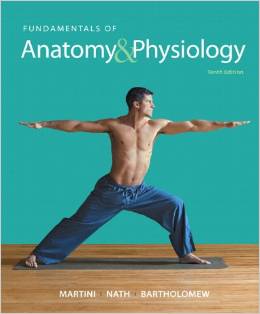
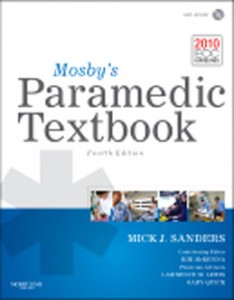
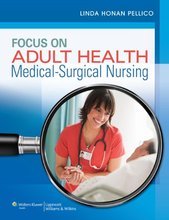
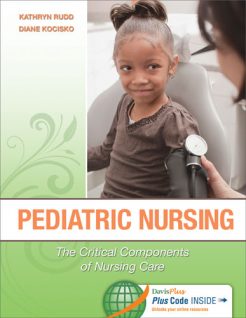
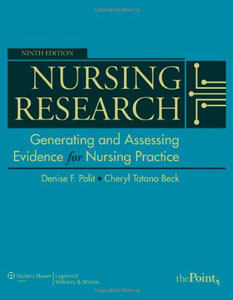

Reviews
There are no reviews yet.